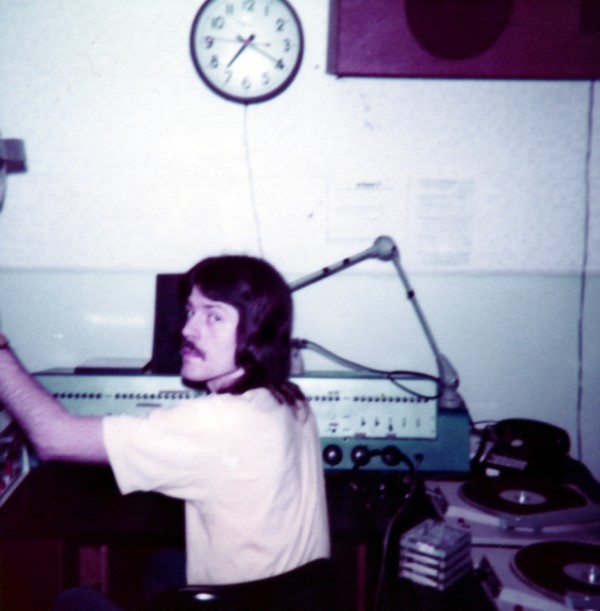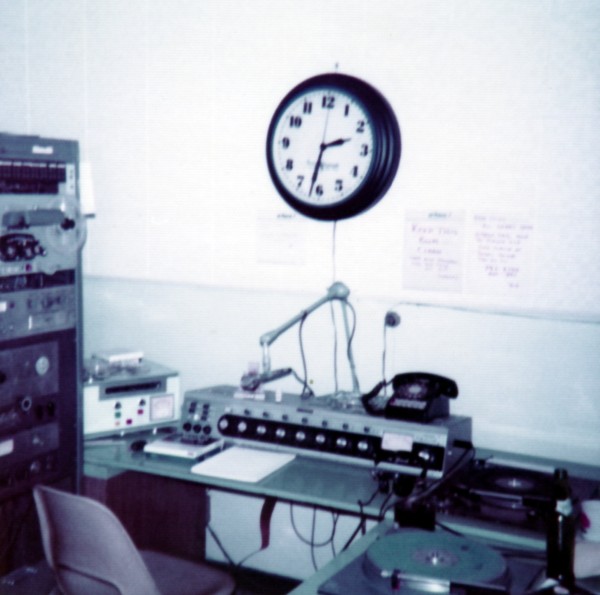|
WTMA PRODUCTION
Since the produced commercial is
the station's bread and butter, it is important that start and stop
dates, production cover sheets and general copy mentions be
carefully checked by the production man to insure that all is in
order and correct. An incorrect spot is not paid for by a client.
The production man is the last inspector of this material and shares
the responsibility with the production department for scheduling and
copy errors.
Since the produced commercials amount to up to 10 minutes of our
airtime every hour, it is imperative that all of our produced
commercials be of the best quality. Bad production retards our
over-all air sound greatly, while good material can help us
tremendously.
All production men should be well schooled in production techniques
and delivery in order to maintain this quality. When a piece of copy
and/or production is of poor air quality, it will be reassigned to
its producer. Final copy cuts are at the discretion of the
production man. If copy cuts are necessary, make them, but use
common sense in cutting.
Certain specific policies should become habit after a time, because
they are used to aid the jock in control. Be aware of these at all
times.
We are capable of the best production in town. Just reading the copy
over a record is not enough. You have the creativity to come up with
some really superb commercials.
Be certain you understand our target audience (that means much more
than just knowing who they are). This will greatly effect the
approach you may use. We strive to eliminate the abrasive, hard-sell
sound that competes for attention with all that surrounds it. We
won't produce such spots, and whenever possible, we won't accept
such abrasive spots even from agencies. Use judgment. If there is
ever any question, ask the Production Director if it's acceptable.
Shoot for smooth, well-produced product on each order. Vary your
approach; extend your style. Be tasteful. Be Understandable and
communicate meaning and emotion. The most important factor to take
into consideration is believability!!!
Any commercial containing questionable material, and/or any
commercial of such poor quality that it might not meet our standards
should be immediately called to the attention of the production
and/or program director.
Production men should be aware that
the primary function of a commercial is to sell a product. Delivery
and production included in our spots should sell and at the same
time be of sufficient quality to be listenable to all audience
members.
Production men are responsible directly to the production department
for producing material within the specified time. Don't wait until
the last moment to do an assignment. This will help us keep on top
of the load.
The procedures set forth in this manual may seem complicated at
first, but they are all logical and have an important purpose.
Become familiar with the following information and stick to it.
PRODUCTION ORDERS
There will be a "Production Order" attached to all copy. This is the
form filled out by the account executive and has all pertinent
information about the order on it. Usually, any questions you may
have about the order can be answered by simply examining the
production order form. Most of the time you won't need to refer to
this form, however, if you do have questions and the information you
need is not contained on the form, contact the account executive. It
is wise to make sure of everything involved in the order so you
don't end up spending an hour on a really fine piece of production
only to find out that you mispronounced the client's name. When a
piece of copy is completed it should be stamped with the stamp
provided and returned for filing to the traffic department.
PRODUCTION SHIFTS
The Program Director will inform you of when you are to be available
for production. During your production shift, you and only you are
entitled to the production studio. If someone is in there dubbing an
aircheck or whatever, politely tell them to get out.

J.J. Scott in one of the WTMA/WPXI
production rooms
MUSIC
Occasionally, cold voice spots are effective. As a general rule
however, we utilize music to keep our pace constantly on the upswing
within each commercial set. Keep this in mind as you consider the
use of music. If you are doing production, you know music. You know
not to use Ricky Ricardo's band. Use music that fits our sound and
will compliment and help sell the product. Ie: good rock, uptempo
jazz. Avoid strident abrasive music. Sound effects add a lot when
they are used properly. The sounds behind your voice should always
compliment your style. In reference to variety, don't use the same
type of music on a spot this week that you used on a spot last week.
Avoid at all costs the use of music which has been used on station
promos.
Don't be afraid to use classical/classical-moog material. It helps
to keep a "prestige" sound about our spots. Do avoid using
Beethoven's 9th and the like, which may have religious
con-notations.
The production albums are in the production studio. Production
albums are to be filed in their proper place.
IMPORTANT RULES CONCERNING MUSIC
1. Current music: Only in two cases can a current, golden or any
programmed music be used.
a. A spot involving the song
itself, such as a record and a tape spot, movie theme, etc.
b. A spot involving the artist to promote a concert or album
sales.
2. Intros: Do not start a spot with
the beginning of any song we play, or that is recognizable to the
mass audience. If possible, don't use the beginning of any song we
play even if it doesn't come at the start of the spot. It's
deceiving, makes folks think we are about to play their song.
Remember pace, and keep it building any way you can. Don't let the
intensity drop. Example: if there is a tag to be added, don't just
throw it on cold....produce, add similar music and make it sound
like apart of the original spot.
SPOT ENDINGS
Unless the production instructions specifically say otherwise, all
produced commercials should end cold voice (two words) or
simultaneous stinger with last word in the copy. This policy was
created to give the station sound a consistency and superior on-air
sound. Music trail out is not acceptable (except when there is to be
a live tag added by the jock.) If a spot comes in from an agency
with a music trail of stinger, remove it. Example: (spoken)
"...Gladys Knight and the Pips for Coke... (sung)...ooh lalala
Coke." Fade it smoothly, but quickly after the announcer's last
word. The same thing applies to a spot which is all singing.
Example: (sung) "....Coca Cola is so swellllalalala..." We cut it at
"...Coca Cola is so swell." This may shorten the length of the spot
by a few seconds, but that's okay.
COPY
General: You are the announcer. The spot you produce represents not
only the client, but also you. You are a big part of the station's
on going image. If the copy is redundant, ever hip, or hokey, change
it. If you need to change a line or a thought in order for you to
communicate the message properly, feel free to do so. This is not to
encourage extensive jock rewrites. Those persons writing copy will
strive to provide fresh imaginative copy, but it must fit you and
your interpretation. Amend it to compliment your approach. Always be
sure to retain the original meaning through your changes. Watch
connotative meanings. Use judgment and clear any major changes
through sales.
IDENTITY
Never include yourself as part of the sponsor's claim by saying
"we". Example: "....Tonight's sale here at Sears. We invite you..."
Never elude that you are in fact there, by saying "come" instead of
"go". Example: "....The Texaco grand opening. Come on out". Don't
mix identity, and never endorse. No station call letters in
commercial copy. Never include your name in a spot. Ie: "...Hi, this
is Jim White for Sam's Tattoo."
UPDATES
No fun but necessary. When a spot refers to a specific upcoming
event, several spots will be cut, so that as the event date
approaches, we will have a spot specifically and clearly referring
to that time and date.
Example:
1st copy) Beatles coming
Sunday, July 22nd. (runs thru July 15th)
2nd copy) Beatles coming Sunday. (runs thru Friday the 20th)
3rd copy) Beatles coming tomorrow. (runs Saturday only)
4th copy) Beatles coming tonight. (runs Sunday only)
Update information will be provided
with production orders. Unless update instructions are provided you
can assume that only one spot is required. If there is any question
check the stop date, or call the salesman who had that account. All
update spots should be produced at the same time to avoid last
minute hassles.
TIME REFERENCE
If a concert is at 8 P.M. on a Saturday, the copy should say:
"....Saturday night at eight." or: "...Saturday at 8 P.M." Not:
"...Saturday Night at 8 P.M." Night and P.M. are redundant and not
acceptable. When a spot refers to a sale or event, "...happening
noon 'til nine Thursday.', it is inexcusable to hear that spot on
the air after noon, or after the sale is over. An update spot should
be cut which would begin at noon saying: "happening now 'til nine
tonight." When a spot does refer to a sale ending time notify
traffic to insure the spot will not be logged after the sale is
over. As a further safeguard, put a note on top of the cart: "Do not
run after 9 P.M."
OTHER MENTIONS
If a spot mentions a product which that client doesn't normally
sell, a notation should be made on top of the cart. Traffic should
also be notified. Example: "Go to Sears and have a free Coke and
register for a Yamaha mini bike". This Sears spot shouldn't run in
the same spotset with a Dr. Pepper or Honda commercial.
LENGTH
As a rule of thumb, we are primarily concerned with not going over
the allotted time rather than being under. Naturally, try to come as
close to 60 or 30 seconds as you can, but if there is just no way
you can stretch the copy farther than 52 seconds, fine. When it
comes to going over, here is the rule: 60 second spots should be no
longer than 61 seconds. 30 second spots should be no longer than 31
seconds.
Any spot heard on the air which violates any of the preceding or
following guidelines, ie: over-length, poor quality, questionable
copy, incorrect end-cues, etc., should be called to the attention of
the Production or Program Director.
SUMMARY AND ADDITIONAL INFORMATION
1. Run carts past splices, and never record over them.
2. Clean heads on both the reel-to-reel and cart machines before and
after each production session.
3. Don't use slapback echo unless you are putting it on a voice
track which will eventually have music under it...even then do not
use much.
4. Be quality conscious. If you are dubbing an agency spot which you
think is of questionable taste, get the Program Director and get his
opinion on whether or not we will air the spot.
5. When you have finished a session in the production room, clean up
after yourself. Old labels should be thrown away. Tapes, records,
sound effects, unused labels and the like should be put in the
respective places. Cover sheets and copy should be returned to
Traffic for filing. |



